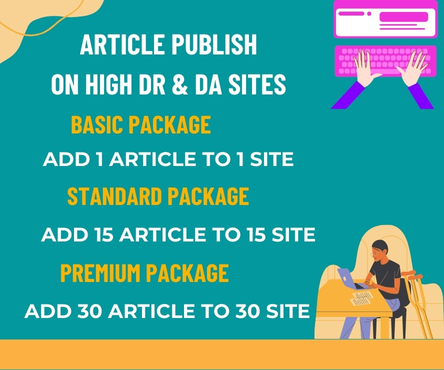In the digital age, where attention spans are shorter than ever, the speed at which a webpage loads can make or break a user’s experience. Page load time is not just a technical metric; it is a critical factor that influences user behavior, bounce rates, and conversion rates. Understanding the relationship between these elements is essential for businesses aiming to optimize their online presence and maximize their return on investment. https://weddingphotographerwebdesign.com/
The Importance of Page Load Time
User Expectations
Today’s internet users have high expectations when it comes to website performance. Research indicates that users expect a webpage to load in two seconds or less. If a site takes longer than three seconds to load, the likelihood of users abandoning the page increases dramatically. In fact, studies show that a one-second delay can lead to a 7% reduction in conversions. This expectation is particularly pronounced in mobile browsing, where users are even less tolerant of slow load times.
Bounce Rates
Bounce rate refers to the percentage of visitors who leave a website after viewing only one page. A high bounce rate is often indicative of a poor user experience, and page load time plays a significant role in this metric. When a webpage takes too long to load, users are more likely to click away, resulting in a higher bounce rate. Research has shown that a two-second delay can increase bounce rates by up to 32%. This statistic underscores the importance of speed in retaining visitors and keeping them engaged with the content.
Conversion Rates
Conversion rate is the percentage of visitors who complete a desired action on a website, such as making a purchase, signing up for a newsletter, or filling out a contact form. Faster page load times can lead to higher conversion rates, as users are more likely to complete these actions when they do not encounter delays. A study by Akamai found that a 100-millisecond delay in load time can decrease conversion rates by 7%. This highlights the direct correlation between page speed and a website’s ability to convert visitors into customers.
The Science Behind Load Time and User Behavior
Psychological Factors
The psychology of user behavior plays a significant role in how page load time affects bounce rates and conversions. Users often associate slow load times with poor quality and untrustworthiness. If a website takes too long to load, visitors may perceive the brand as unprofessional, leading them to abandon the site in favor of competitors that offer a faster experience. This perception can have long-lasting effects on brand reputation and customer loyalty.
Mobile Users
With the rise of mobile browsing, page load time has become even more critical. Mobile users are particularly sensitive to delays, and a slow-loading site can lead to a significant drop in mobile conversions. According to Google, 53% of mobile users will abandon a site that takes longer than three seconds to load. As mobile traffic continues to grow, optimizing for speed on mobile devices is essential for capturing and retaining this audience.
Strategies for Optimizing Page Load Time
Image Optimization
One of the most common culprits of slow page load times is large image files. Optimizing images by using next-gen formats like WebP and compressing them can significantly reduce load times without sacrificing quality. Additionally, implementing responsive images that adjust to different screen sizes can enhance performance across devices.
Minimizing HTTP Requests
Every element on a webpage, such as images, scripts, and stylesheets, requires an HTTP request. Reducing the number of elements on a page can decrease load times. This can be achieved by combining CSS and JavaScript files, minimizing the use of plugins, and removing unnecessary elements that do not contribute to the user experience.
Utilizing Caching
Caching is a technique that stores copies of web pages and serves them to users without needing to regenerate them each time. Implementing caching strategies can significantly speed up load times, especially for returning visitors. Browser caching, server-side caching, and content delivery networks (CDNs) are effective methods for improving performance.
Content Delivery Networks (CDNs)
CDNs distribute content across multiple servers located around the world. By serving content from a server that is geographically closer to the user, CDNs can reduce the distance data must travel, resulting in faster load times. Utilizing a CDN can be particularly beneficial for websites with a global audience.
Measuring and Monitoring Performance
Core Web Vitals
Google’s Core Web Vitals are essential metrics for assessing page performance. These include Largest Contentful Paint (LCP), First Input Delay (FID), and Cumulative Layout Shift (CLS). Monitoring these metrics can help identify areas for improvement and ensure that the website meets user expectations for speed and responsiveness.
Regular Testing
Regularly testing website performance using tools like Google PageSpeed Insights, GTmetrix, and Pingdom can provide valuable insights into load times and performance issues. These tools can help identify bottlenecks and areas for optimization, allowing businesses to stay ahead of potential problems and maintain optimal performance.
Conclusion
In conclusion, page load time is a crucial factor that directly affects both bounce rates and conversion rates. By understanding the relationship between load time and user behavior, businesses can implement effective strategies to optimize their websites. Prioritizing page speed not only enhances user experience but also drives better business outcomes, making it an essential focus for any online presence. Investing in performance improvements can lead to increased customer satisfaction, higher engagement, and ultimately, greater revenue. As the digital landscape continues to evolve, ensuring that your website loads quickly will remain a key component of successful online strategies.

